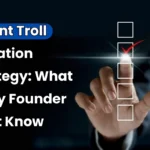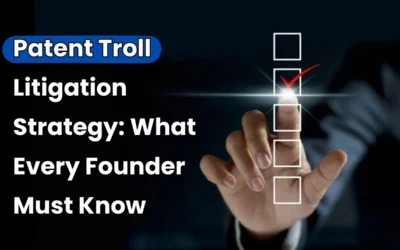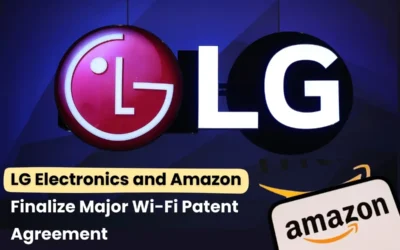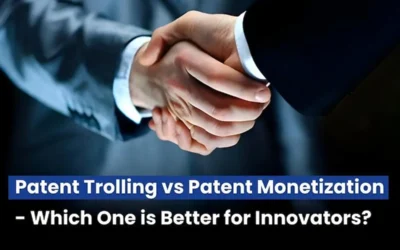
Patents are, in this highly competitive world, good valuables for businesses and discoverers. In fact, the present times see a large number of patent owners step forward to explore the potential for the release of value of intellectual property as the world’s industries keep on evolving. Among them, probably the most effective one is the making of a proper Global Patent Monetization strategic plan. The monetization of patents is an important business tool that allows companies to earn incomes from their inventions and innovative ideas as long as the same protects intellectual property. Patent monetization needs a precise strategy so that such a process is efficiently done with an income. Let’s take you through this article, explaining the process of drawing out a strategic plan for global patent monetization and answering some frequently asked questions about the topic.
Why a Strategic Plan for Patent Monetization?
A global patent monetization strategic plan ensures businesses take the right decision regarding their patent portfolios. A strategic approach ensures that patent holders do not miss some big financial opportunities or forget to protect their patents properly.
A well thought-out strategy will enable you to:
- Maximize the value of your patents.
- Explore various channels of monetization.
- Prevent infringement or legal challenges.
- Identify licensees or buyers worldwide.
Next section: we have provided what you’ll need in establishing a well-informed strategy toward global patent monetization.
Step 1: Patent Portfolio Analysis
It is not even possible for anyone to prepare the best possible plan for a program of patent monetization based around the global area without getting some critical assessment or analysis carried on the given portfolio of patents that you’ve so far registered through your innovatively developed IP.
Some factors to consider during the evaluation include:
- Patent Quality: Are the patents strong and defensible in multiple markets? Review whether they reach a broad geographically diverse range and if they are legally defensible.
- Market Relevance: Determine what specific industries or market areas your patents can be used for. Is it an area of emerging technologies or in higher demand areas?
- Patent Age and Expiry: The patents that have more age are valuable. Check your patents’ expiry dates and then rank the ones with the best chances of delivering good returns.
Conduct a patent analysis in detail to help you rank those patents that can be expected to yield a better return on investment.
Step 2: Establish Your Monetization Goals
After you have analyzed your patents, you will need to define the objectives of monetization. Your business model may vary, so you must prioritize what is more important for you. These may include:
- Licensing: Licensing deals give permission to other companies the usage of a patent to another company at a fee or royalty. It is one of the most common forms of monetizing patents.
- Outright Sale: You may sell them outright to some third party. In that way, you receive single payment outright.
- Joint Ventures or Partnerships: You may possibly enter into joint ventures or strategic partnerships with other companies that would need to use your patented technologies. This might generate long-term revenue streams for you.
- Litigation or Enforcement: You may be able to recover damages or settlements by litigating against infringing parties in certain cases.
Setting clear monetization objectives will allow you to choose the right path and tailor your strategy.
Step 3: Identify Potential Partners and Licensees
Identification of potential partners or licensees forms a significant chunk in devising a strategic plan for global patent monetization. After describing your objectives, it is high time to look for companies or sectors that would find value in your patented technologies.
How to find appropriate companies to partner with
- Research those companies that operate in your patent’s area
- Industry conferences and even seminars that could have companies looking for technology acquisition and licensing.
- Patent databases and licensing platforms to find companies with a history of licensing similar patents.
A focused approach towards identifying the right partners may simplify the process of monetization while ensuring you’re targeting the appropriate market segments.
Step 4: Consider Global Markets and Jurisdictions
This needs to be based on the various markets and jurisdictions in all parts of the world. Because patents have territorial protection, enforcement is only possible in countries in which the patent has been granted. Thus, the monetization of patents rests upon good knowledge of patent laws as well as the market dynamics of various regions.
Look for the following points:
- Patent Filing Strategy: Does it file for your patents in any of these markets, or critical international places, such as in the US, Europe, China, and Japan? Consider for filing for this to protect itself with patents that matter in that area.
- Cultural and economic issues: The demand for licensing is much higher in some geographic markets than others in which a patent needs to be bought, then the solution should be balanced with that of its assigned market area.
- Infringement and Enforcement: Patent rights vary from country to country in their process of enforcement. And all these should be well known where the strong or weak patent systems have been when patents have been monetized.Taking all these factors into consideration, a global strategy can be drawn with all legal, cultural, and economic factors of all the markets so that one would find the best return from patents.
Step 5: Implement Your Monetization Plan
This is the implementation part of having your strategy because you now have it. Depending on your strategy to monetization, you shall negotiate, license, or sell to the distributors.
What you shall do during this stage involves;
- If you are of the decision that you want to license your patents, you then need to negotiate favorable terms; that is, good royalty rate, upfront payment, and the term of the deal.
- Due Diligence: Before entering a deal in an agreement, ensure that your possible partners can deliver the provisions of the deal.
- Enforcement: If you’re going to litigate or enforce this right, you can take a case to lawyers by displaying your intellectual property and being paid fairly.
Building stage is where you will gather your ideas, and proper management will take you to the top.
Conclusion
Global patent monetization is the process of unlocking patents strategically. With the above mentioned, through a portfolio evaluation to define objectives; identify partners or potential partners then analyze global markets, one thus creates a strategy that maximizes the revenue-potential on patents. Thus, such strategy could transform innovative ideas into more valuables worth money that continually bring in streams of income by fortifying the thought on how to protect patents globally.









